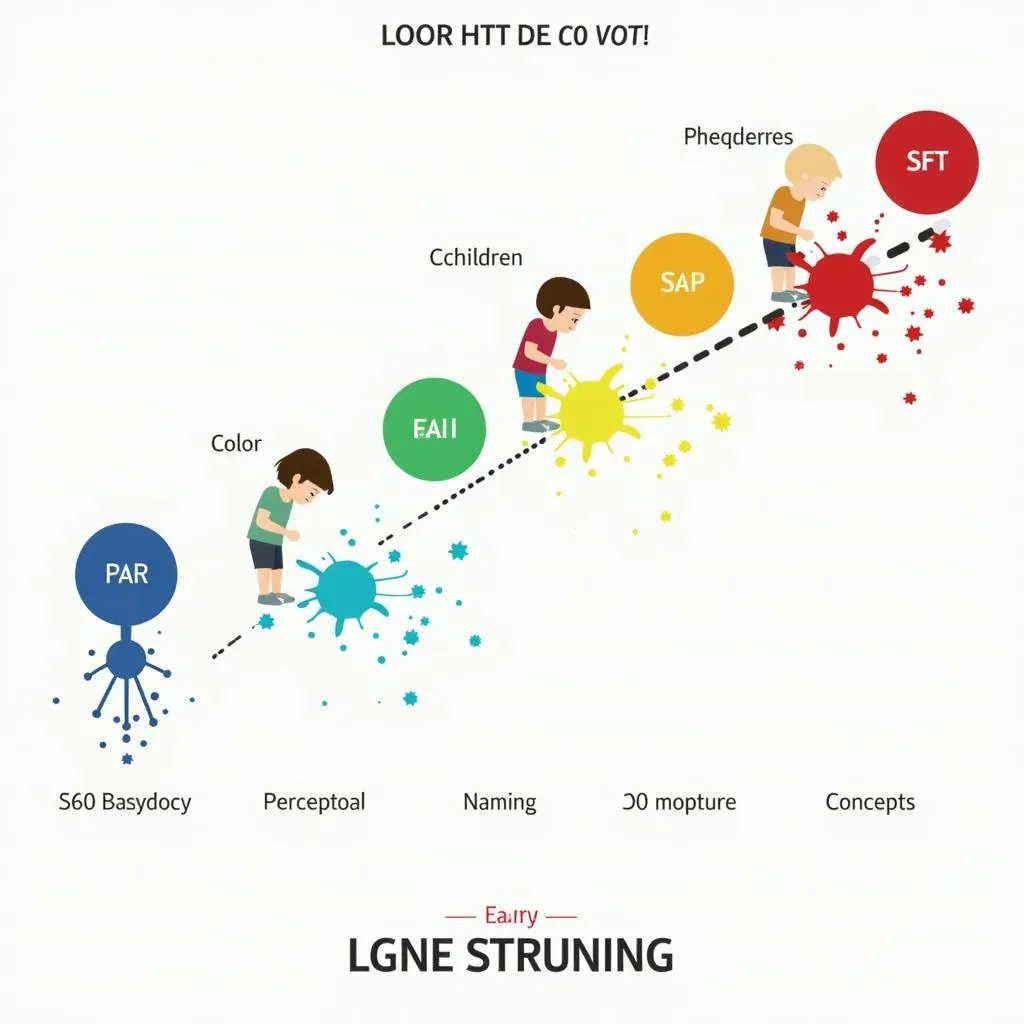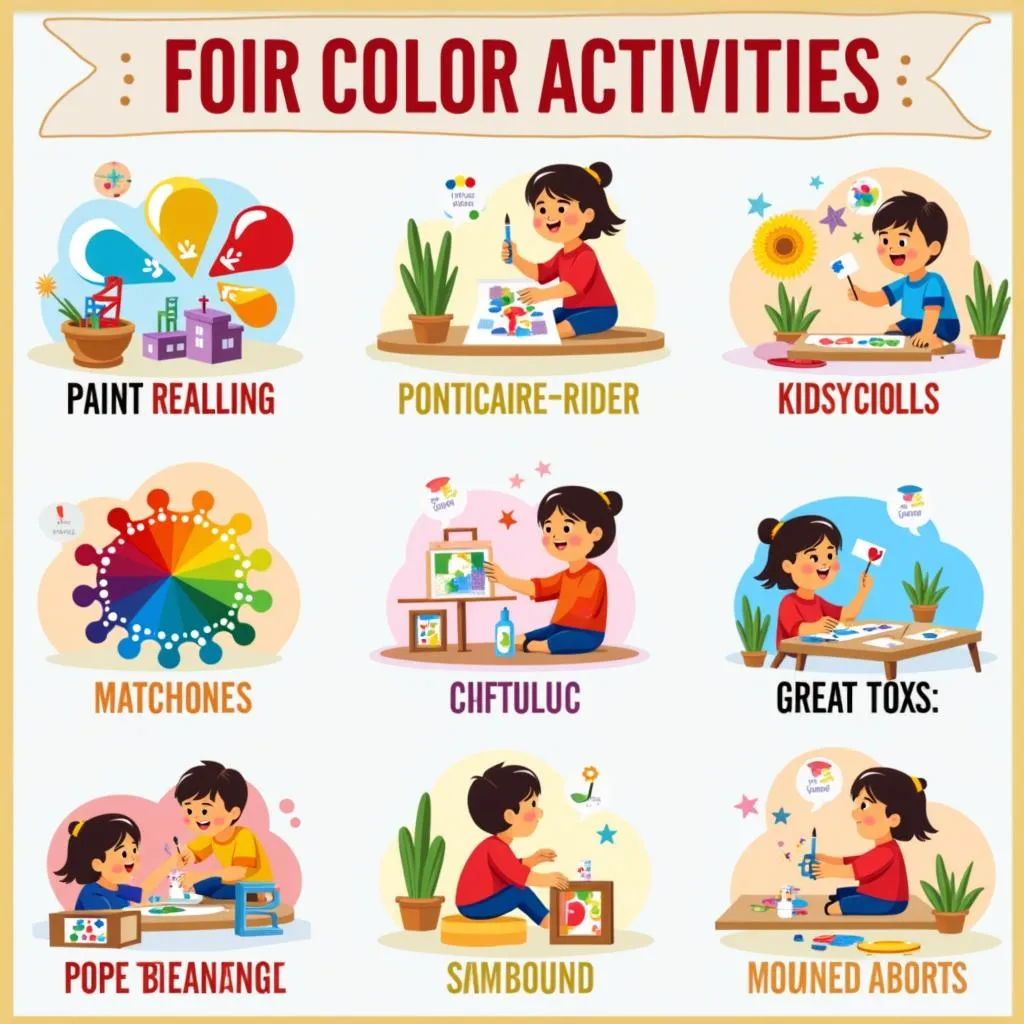The world of colors is vibrant and fascinating, captivating children’s imaginations and stimulating their senses. As parents and educators, we often wonder when our little ones start recognizing and understanding these beautiful hues. This comprehensive guide will delve into the developmental milestones of color learning, exploring the typical ages when children grasp different color concepts and offering practical tips to nurture their color awareness.
Early Stages of Color Perception
Infants are born with the ability to perceive light and dark, but their color vision develops gradually over the first few months. By around two months of age, babies can distinguish between red and green, and by four months, they can recognize a wider range of colors, including blue and yellow.
The Emergence of Color Names
Between 18 months and two years old, children start associating names with specific colors. They may point to a red ball and say “red,” but they often have difficulty naming colors consistently. This is because they are still developing their language skills and understanding of abstract concepts.
Developing Color Concepts
As children approach three years old, they become increasingly adept at identifying and naming colors. They can sort objects by color, match colors accurately, and understand basic color concepts like “light” and “dark.” By this age, they can also start identifying and naming shades of colors, such as “pink” or “light blue.”
Mastering Color Combinations
Around four years old, children begin to recognize and understand color combinations, such as “purple” being a mix of red and blue. They also develop a sense of color harmony, noticing which colors look good together and which ones clash.
Color-Related Activities for Young Learners
There are many fun and engaging activities you can do with your child to foster their color learning:
- Color sorting: Gather a collection of toys, objects, or even just pieces of paper in different colors. Encourage your child to sort them by color.
- Color matching: Use color flashcards, blocks, or other materials to play color matching games.
- Painting and drawing: Let your child experiment with different paints and crayons. Discuss the colors they are using and how they make them feel.
- Reading color-themed books: Choose stories that feature colorful characters, scenes, or objects.
- Outdoor explorations: Take your child on nature walks and point out the different colors of plants, flowers, and trees.
Expert Insights
“Color learning is a gradual process, and every child develops at their own pace,” says Dr. Emily Carter, a renowned child development specialist. “It’s important to be patient and create a fun and supportive environment for your child to explore the world of colors.”
“Encourage your child’s curiosity and provide them with opportunities to experiment with colors through hands-on activities,” suggests Mr. David Thompson, a certified art teacher. “This will help them develop a strong foundation for color understanding and artistic expression.”
Conclusion
Understanding when children learn colors is essential for parents, educators, and caregivers. By recognizing their developmental milestones and providing them with engaging activities, we can nurture their color awareness and pave the way for a rich and vibrant sensory experience. Remember, learning about colors is not just about memorizing names; it’s about fostering creativity, stimulating curiosity, and expanding their understanding of the world around them.
FAQ
Q: Can I teach my child colors before they are 18 months old?
A: While infants may start distinguishing colors earlier, they are not ready to learn color names before around 18 months old. Focus on providing them with colorful experiences and encouraging their natural curiosity.
Q: Is it important for children to learn color names in a specific order?
A: There is no strict order in which children need to learn colors. Encourage them to explore and discover colors at their own pace.
Q: What if my child is having difficulty learning colors?
A: If your child seems to be struggling, try using different methods and materials. Consult with their pediatrician or a child development specialist for personalized advice.
Q: What are some ways to make learning colors fun?
A: There are countless ways to make color learning enjoyable. Incorporate colors into daily routines, use music and songs, and involve your child in creative activities.
Q: How can I help my child develop their color vocabulary?
A: Point out colors in everyday objects, read color-themed books, and play color-matching games.
 Visual Representation of Color Learning Stages
Visual Representation of Color Learning Stages
 Fun and Engaging Color Activities for Kids
Fun and Engaging Color Activities for Kids
Remember: The journey of color learning is unique for every child. Encourage their natural curiosity, provide them with engaging activities, and celebrate their progress every step of the way.